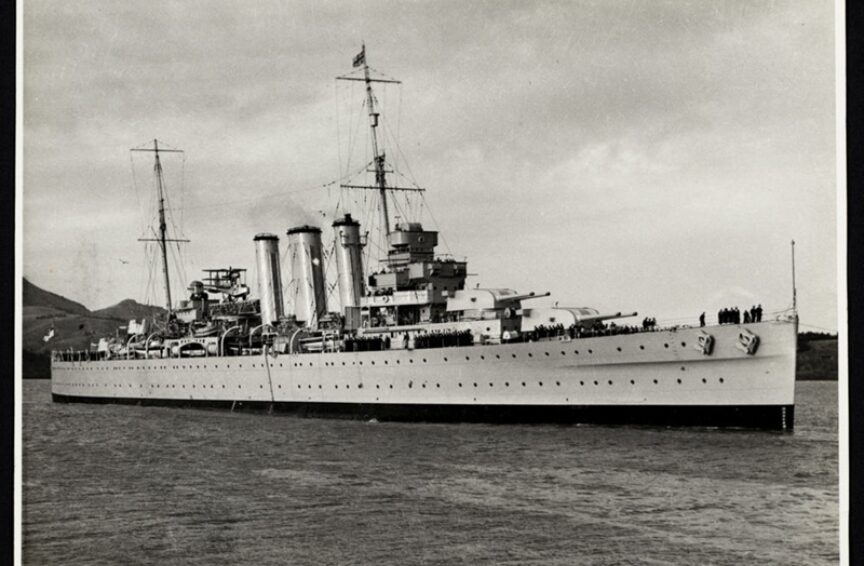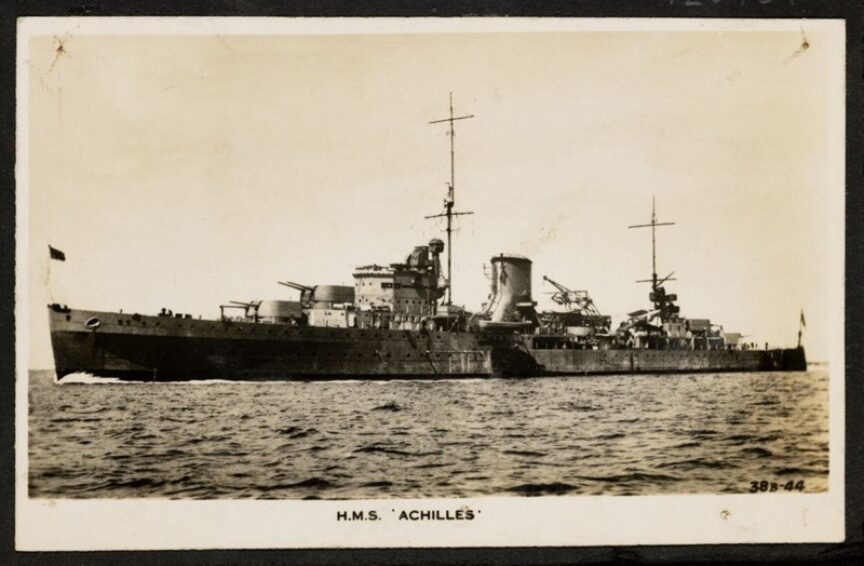PO Box 95
Lyttelton 8841
Te Ūaka recognises Te Hapū o Ngāti Wheke as Mana Whenua and Mana Moana for Te Whakaraupō / Lyttelton Harbour.
Sweeping Mines in Whakaraupō Lyttelton Harbour
Sometime in the dark hours of 13-14 June 1940 – on the day the Nazi Wehrmacht would triumphantly enter the city of Paris, France – the Kriegsmarine auxiliary cruiser HKS Orion sailed into Auckland’s Hauraki Gulf cunningly disguised as a merchant ship, and quietly laid 228 naval contact mines. Five days later, the Union Steam Ship Company's 13,415 ton trans-Pacific liner RMS Niagara struck two of these mines off the Whangarei Heads and promptly sank by the bow with the tragic loss of the ship’s cat ‘Aussie’ who failed to join the 349 crew and passengers in one of 18 lifeboats. And so it was that the Second World War explosively arrived in Aotearoa New Zealand waters.
Facing the prospect of deadly mines blockading the entire island nation, the wartime Labour government of Prime Minister Peter Fraser swung into action commissioning a fleet of minesweepers to keep New Zealand ports open. Based on a Royal Navy coal-fired trawler design from WW1, the Castle-class minesweepers proved quick to build in shipyards around the country. The thirteenth and very last of her class to be laid out, the HMNZS Waiho was built by Stevenson & Cook Engineering in Port Chalmers and launched on 19 February 1944. At 447 tons she was powered by a coal-fired, single shaft reciprocating engine delivering 480 IHP for a maximum speed of 10.5 knots. With a complement of 27 crew members she was armed with a single ‘12 pounder’ naval gun, 20 depth charges and ASDIC sonar developed by the MoD's 'Anti-Submarine Detection Investigation Committee'. Her minesweeping equipment consisted of kilometre-long trailing cables for hooking mines, and dan marker buoys for marking cleared waters.
Named after the Waiho (Waiau) glacier-fed river that starts at the terminus of the Kā Roimata-a-Hinehukatere Franz Josef Glacier in Te Waipounamu South Island’s Westland, she entered service with the 194th Auxiliary Minesweeping Group at Auckland on 29 June 1944, taking part in daily mine sweeps of Waitemata Harbour. A year later in June 1945, with the war against Imperial Japanese forces still raging in the Pacific theatre, the Waiho sailed for Ōhinehou Lyttelton to search for and clear the harbour of any mines. While deployed, apart from the minesweeping patrols, she conducted gunnery and anti-submarine drills, including the use of depth charges that evidently also delivered a bountiful bycatch of what are possibly hāpuku groper (please note that Te Ūaka The Lyttelton Museum does not condone the illegal practice of blast fishing).
After ensuring that Whakaraupō Lyttelton Harbour was free of Nazi mines, the Waiho returned to Auckland on 4 September 1945, just two days after the Japanese formal capitulation ending WW2. Joining the 25th Minesweeping Flotilla as a danlayer, she assisted in the final sweep of the Hauraki Gulf. With her wartime deployment completed the Waiho was sold to Red Funnel Trawlers Pty Ltd of Sydney in May 1946, renamed the Matong, and began her presumably non-explosive fishing career in June 1947. After ten more gainful years at sea she was laid up in December 1958 and finally scrapped in Singapore in 1964, although her hull’s double bottom apparently lived on as a pontoon.

